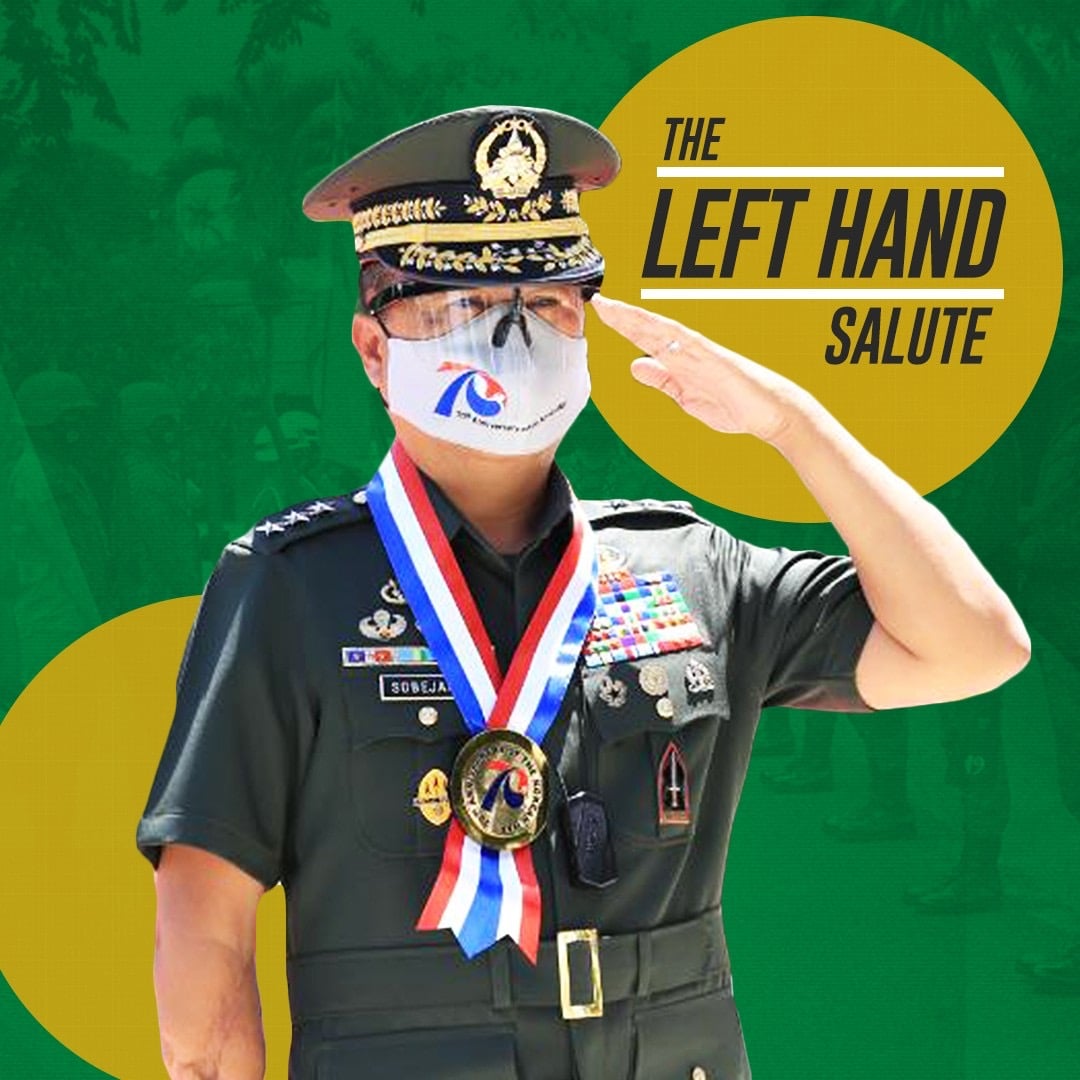Customs and traditions serve as established guidelines in the honorable Profession of Arms. Under these are gestures of respect that are passed from one generation to another — salute is one of them. The method of rendering salute has varied from the ages of our tribal ancestors, through the pre-colonial era, and up to today’s modern time.
There is no definite beginning that can be traced to the history of the military salute, it has mysterious origin. During the age of chivalry, knights were mounted and donned steel armor, including a metal helmet. When two friendly knights met, it was customary for them to raise their visor using their right hand – to show that they held no weapon – and to expose their face to the view of other, as a gesture of friendship and respect. The same was also practiced to greet their lords and commanders, and to identify themselves to their superiors.
Meanwhile, according to the Armed Forces History Museum, the standard salute may have been influenced by the salute style of the British Navy at the time, as deck hands were often dirty and to expose the dirty palm was regarded as disrespectful.
Today, the salute have become the highest form of military courtesy; it is done when right hand is raised sharply, fingers and thumb extended and joined, palm facing down towards the shoulder, and the tip of the forefinger is placed on the rim of the visor of just at the end of the eyebrow. The proper way to salute is with the right hand; however, the Navy and Marines are allowed to use their left hand when rendering a salute as they use their right hand to hold the grills of the ship while they are on board.
Of all the commissioned and non-commissioned officers of the Philippine Army, there is only one person that does the left hand salute – the Commanding General, Philippine Army Lt. Gen. Cirilito E Sobejana.
In 1995, then Captain Sobejana led a 16-man unit from the First Scout Ranger Regiment who faced off against over 150 fully armed Abu Sayyaf terrorists at Sitio Caro in the town of Isabela, Basilan on January 13, 1995.
Sobejana recalled what happened that time “Noong tinamaan ang aking kamay, muntik nang maputol at malaglag, katabi ko ang aking radio man. Ang ginawa niya ay tinalian niya ang braso ko para ma-control ang bloodflow kaso hindi pa niya tapos mahigpitan yung tali ay tinamaan at pinasabugan kami ng RPG. Nagkahiwalay kami tapos tinamaan din yung aking radioman at doon na ako nag maneuver around habang kagat kagat ko ang aking hinlalaki para hindi malaglag ang aking kamay, nag shift ako sa left hand pero nung tinamaan din ang aking baril ay kinuha ko ang mga baril ng mga kasamahan kong namatay at ‘yun ang ginamit ko.”
With a bullet-riddled right forearm, Captain Sobejana and his men continued to maneuver without retreating at the peak of the close-quarter battle.
During the fierce firefight, 42 Abu Sayyaf members died while several wounded Abu Sayyaf members retreated. Seven Army soldiers died while nine more were wounded.
“I was not thinking of dying that time, kahit ako ang may pinakamaraming tama sa grupo namin ay hindi ako pwedeng panghinaan ng loob para hindi rin panghinaan ng loob ang aking mga kasamahan.” he continued.
The fire fight lasted for four hours when the government reinforcement finally came and secured the area.
“Noong dumating ‘yung reinforcement, iniisip ko pa rin yung dalawang kasama ko na pinugutan ng ulo, nandon pa rin yung sama ng loob. What affects me more ay yung daing ng aking mga kasamahan na "Tabangi ko Sir, tulungan niyo ako Sir" bago sila mawalan ng hininga, inihabilin nila yung mga mahal nila sa buhay, mga pamilya nila,” he added.
After the encounter, his right hand lost its motor capabilities. He underwent nine surgical procedures in United States for two years. He requested the doctor not to amputate his right arm because he wanted to continue in serving the country.
Because of this heroic act, Sobejana is considered as one of the country’s living hero and was awarded the country’s highest military award, the Medal for Valor.
"We will continue to fight insurgency to win peace for the country. I had several gunshot wounds, and I turned those wounds into wisdom rather than anger,” said Lt. Gen. Sobejana.
His acts of heroism and bravery were the reason why Lt. Gen. Sobejana’s inability to render a salute using his right hand. And this is the story of the left-handed salute.#

